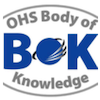Abstract
Process safety incidents have resulted in thousands of deaths, severe environmental damage, and massive property and business losses. Process safety is usually seen as the responsibility of process safety or chemical safety experts. However, limiting the management of process safety to process safety professionals ignores the contribution of generalist occupational health and safety (OHS) professionals and the value of an integrated, collaborative approach. As a companion chapter to OHS Body of Knowledge Process Hazards (Chemical), this chapter provides information vital for the effective engagement of generalist OHS professionals in the management of process safety. After defining process safety, the chapter provides contextual information from historical and legislative perspectives, and considers the impact of process safety incidents on people, the environment and businesses. The core of the chapter focuses on clarifying the roles of process safety professionals and generalist OHS professionals, and reviewing process safety-related hazard identification, risk assessment and control from an OHS perspective. Finally, implications for OHS practice are discussed. As an impetus for change to both process safety and OHS practice, this chapter should facilitate improved safety in all process and hazardous chemical environments.
Keywords: process safety, occupational health and safety, OHS, failure, control
First year of publication: 2017
Current Version: 2019
Chapter 13: Managing Process Safety
Table of contents
| 1 | Introduction |
| 1.1 | Process for developing the chapter content |
| 1.2 | Definition of process safety |
| 1.3 | Process safety vs OHS |
| 2 | Historical perspective |
| 3 | Extent of the problem |
| 3.1 | People |
| 3.2 | The environment |
| 3.3 | Cost |
| 3.4 | Other business impacts |
| 4 | Legislation |
| 5 | Clarifying roles |
| 6 | Hazard identification and risk assessment |
| 6.1 | Engineering drawings |
| 6.2 | Failure modes and rates |
| 6.3 | Approaches and tools |
| 7 | Control |
| 7.1 | Elimination through design |
| 7.2 | Prevention |
| 7.3 | Evaluation and assurance |
| 7.4 | Mitigation |
| 8 | Implications for OHS practice |
| 9 | Summary |
| Useful resources | |
| References |
Appendix 1: Common acronyms used in process safety
Appendix 2: Comparative role and interface of process safety and generalist OHS professionals
– scenario of an LPG tanker
Appendix 3 Comparison of process safety and OHS management systems
Purchase the AUDIO chapter here through AIHS
OR

Trish Kerin BEng(Mech)(Hons), DipOHS, GAICD, CEng, FIChemE
Professional Process Safety Engineer, FIEAust Director, IChemE Safety Centre, Institution of Chemical Engineers
After graduating with honours in mechanical engineering, Trish spent several years working in project management, operational and safety roles for the oil, gas and chemical industries. Trish has represented industry on many government committees related to process safety, and currently sits on the board of the National Offshore Petroleum Safety and Environmental Management Authority (NOPSEMA) and the Mary Kay O’Connor Process Safety Center steering committee. Trish leads the IChemE Safety Centre, a not-for-profit industry-led consortium focused on improving process safety.
Learning Outcomes: Managing Process Safety
The OHS Body of Knowledge takes a conceptual approach which enables it to be applied in different contexts and frameworks. To optimise its value for education and professional development learning outcomes have been developed for each technical chapter in the Body of Knowledge.
The learning outcomes as described give an indication of what should be the capabilities of a new graduate OHS professional in the workplace. I t is up to those developing OHS education programs, OHS professionals planning their CPD or recruiters or employers selecting or developing people for the OHS function to consider the required breadth vs. depth
Webinars
Remembering Bhopal – what have we learned?
The 3 December 2014 marks the 30th anniversary of the Bhopal tragedy. The worst industrial incident in history, with thousands of fatalities and hundreds of thousands of people affected. The IChemE Safety Centre produced a special member webinar to mark the event, and remind us all why we need to be ever vigilant in the world of process safety
Date: 2014
Presenters: Trish Kerin, Director IChemE Safety Centre
Fiona McLeod, ConocoPhillips
Mark Hailwood LUBW
Source: https://vimeo.com/icheme/review/113482907/18f14b5bd5
Normalisation of deviance
This webinar focuses on the topic of normalisation of deviance, exploring the cultural aspects of normalising deviance through the Columbia case study, and draws links to main stream process safety incidents.
Date: 2015
Presenters: Trish Kerin, Director IChemE Safety Centre
Source: https://vimeo.com/icheme/review/122444848/2613f37963
Pike River leadership, culture and design
Reflection of the events leading up to the mine disaster undertaken on its 5th anniversary.
Date: 2015
Presenters: Trish Kerin, Director IChemE Safety Centre
Source: https://vimeo.com/icheme/review/146221140/bb35b1dbbf
Process safety culture
This webinar discusses the Texas City Refinery disaster focusing on the role of the BP corporate culture.
Date: 2015
Presenters: Dr Paul Tebo, member of the Baker Panel convened to investigate BP’s corporate systems after the Texas City Refinery explosion.
Trish Kerin, Director IChemE Safety Centre
Source: https://vimeo.com/icheme/review/122959432/42afb75bdf
Achieving world-class process safety performance
John Bresland joins Trish Kerin to discuss his key learnings from investigating incidents from his time at the CSB as well as his long career in process safety.
Date: 2016
Presenters: John Bresland, former chair of US Chemical Safety Board
Trish Kerin, Director IChemE Safety Centre
Source: https://vimeo.com/icheme/review/158468400/35d7cdcfcd
Introduction to Process Safety
Date: 2017
Presenters: Trish Kerin, Director IChemE Safety Centre
Source: https://www.youtube.com/watch?v=suJZA3bdFcA&t=10s
Knowing how to monitor Process Safety
Origin has implemented a monitoring and reporting approach tool across its operational business units to monitor process safety risks and to deliver information that had not previously been visible. Leading and lagging indicators are a major source of performance information, supplemented by other processes such as the Asset Risk Framework, management reviews and assurance, ISO55000 framework, accident and incident investigations and benchmarking.
Date: 2019
Presenters: Martin Sedgewick, Process Safety Advisor, Origin Energy
Source: https://www.youtube.com/watch?v=7VHBhPb9kug&t=1912s
Process safety concepts
Discussion on the ISC framework for process safety and how it applies for various process safety concepts. The discussion looks at how process safety concepts apply in different industries and organisations.
Date: 2020
Presenters: Trish Kerin, Director IChemE Safety Centre
Source: https://www.youtube.com/watch?v=vbYxCN9iG6A
Lead Metric : Permit-To-Work checks performed to plan and permit-to-work non-conformance
Discussion on the IChemE Safety Centre’s publication on Lead Metrics: Permit to Work.
Date: 2021
Presenters: Dr Zsuzsanna Gyenes, IChemE Safety Centre and Carolyn Nicholls, RAS
Published 2017 Chapter 13 Managing Process Safety

